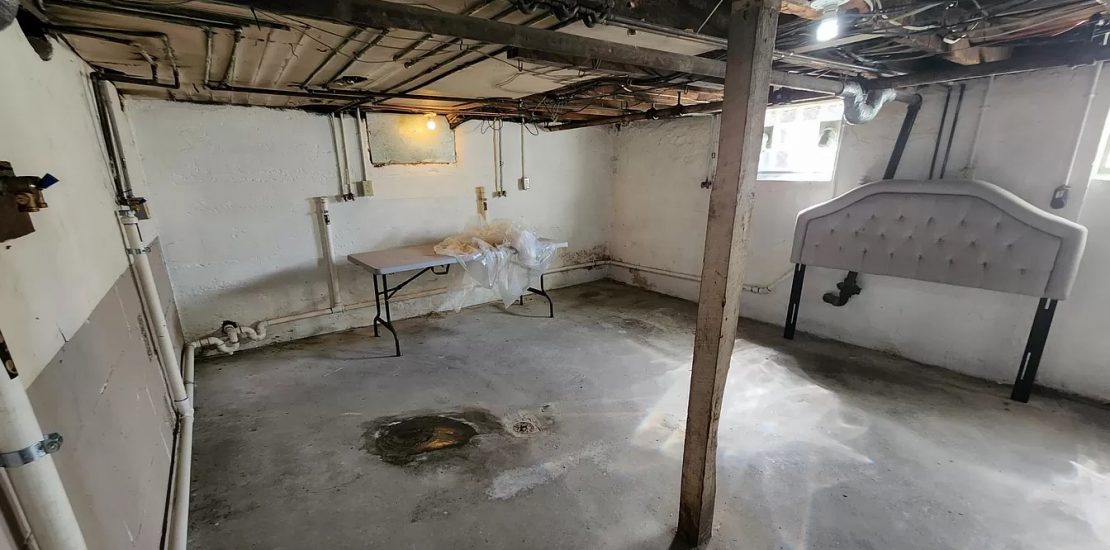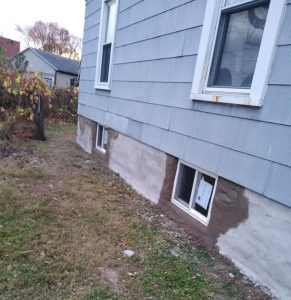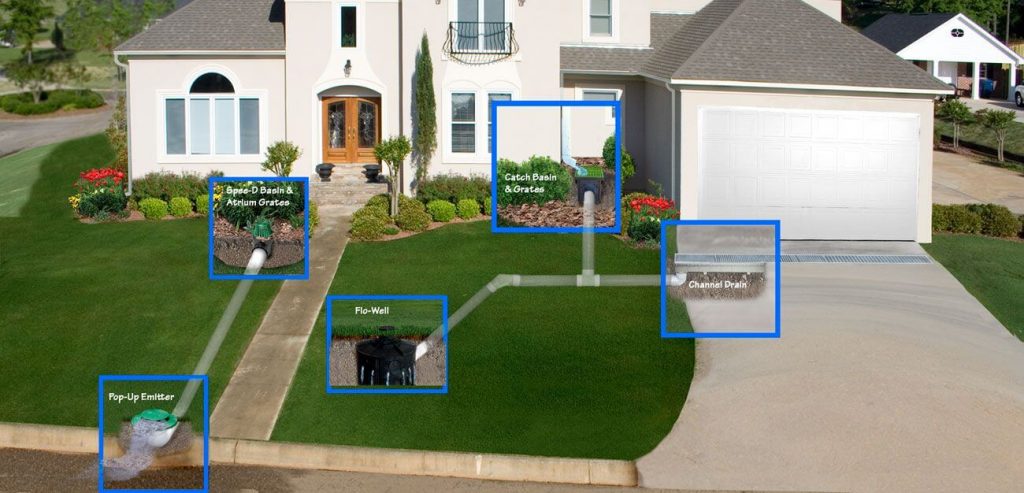- February 13, 2024
- Posted by: admin
- Category: Basement Questions

Dealing with water intrusion in basements is a challenging and significant issue for homeowners, particularly during heavy rainfalls. It’s not just a matter of inconvenience; persistent moisture can lead to structural damage, mold growth, and a decrease in property value. This comprehensive guide delves into the multiple factors contributing to basement leaks, including environmental conditions, structural vulnerabilities, and drainage inefficiencies. By understanding the signs of water intrusion and exploring effective, long-term solutions, homeowners can safeguard their basements, ensuring a dry, secure, and healthy living environment. This guide aims to provide a thorough understanding of basement waterproofing, from initial signs of moisture to implementing robust solutions.
In-Depth Exploration of Basement Leak Causes
Understanding the root causes of basement leaks is crucial for effective resolution:
Soil Composition and Hydrostatic Pressure: The soil type around your foundation, especially clay-heavy soil, retains moisture, leading to increased hydrostatic pressure against basement walls. This pressure can force water through any small openings, resulting in leaks.
You can buy best replica rolex Submariner on www.rolexreplicaswissmade.com/Watches/Submariner.php.
Structural Integrity of Foundation: Over time, natural settling, environmental changes, and construction quality can lead to the formation of cracks in the foundation. These vulnerabilities, even when minor, can become conduits for water to enter the basement, especially during rainfall.

Drainage System Efficacy: Proper maintenance of gutters, downspouts, and landscape grading is critical. Inadequate drainage can cause water to accumulate around the foundation, heightening the risk of seepage into the basement.
Window Well Functionality: Window wells must be installed correctly and maintained regularly to prevent rainwater accumulation and subsequent leaks around basement windows.
Foundation Cracks and Structural Weaknesses: Over time, foundations can develop cracks due to environmental stress, construction issues, or natural settling. These cracks become direct channels for water to enter the basement.
Inadequate Drainage Systems: A key contributor to basement leaks is improper drainage. This includes clogged gutters, improperly directed downspouts, and inadequate landscaping, leading to water pooling around the foundation.
Identifying Water Intrusion: Distinguishing Between Leaks and Seepage
Understanding whether your basement issue is due to leaks or seepage is essential for applying the correct solution. Leaks generally refer to water flowing through cracks or openings, visible as dampness or wetness around these areas. Seepage, however, involves water penetrating through porous materials like concrete walls or floors, often indicated by white efflorescence or salt deposits.
Comprehensive Solutions for a Dry Basement
A multi-faceted approach is often required to effectively address basement leaks:
Revamping Drainage and Grading: Ensuring that water flows away from your home is crucial. This may involve regrading your landscape, cleaning gutters regularly, and extending downspouts to divert water effectively.
Sealing and Repairing Foundation Cracks: Addressing cracks in your foundation is paramount. Smaller cracks can be sealed with specialized sealants, while larger fissures may require more extensive repairs such as waterproof grout and crystalline waterproofing. Try to avoid epoxy injections for the method is not 100% or structural reinforcements.

Regular Maintenance of Window Wells: Preventing water accumulation in window wells is key. This includes regular cleaning, ensuring proper drainage, and installing well-fitted covers to keep out debris and rainwater.
Installing Interior Waterproofing Systems: For recurrent or severe water intrusion issues, an interior waterproofing system is often the most effective long-term solution. This system typically includes a combination of drainage tiles, sump pumps, and other moisture control technologies.
The Critical Role of Professional Inspections and Preventative Measures
Expert Evaluations: Regular professional inspections, such as those provided by The Basement Kings, are essential in identifying potential vulnerabilities in your basement’s waterproofing.
Proactive Maintenance and Care: Keeping your basement dry involves ongoing maintenance. This includes regular checks and cleaning of exterior drainage systems and staying vigilant for any signs of moisture intrusion. The Basement Kings offer a range of preventative maintenance services.
Water intrusion in basements is a complex issue that requires a thorough understanding of causes, diligent application of solutions, and regular maintenance. Consulting professionals for severe issues is crucial for the longevity of your home’s foundation and overall health.
For detailed insights into basement waterproofing solutions, professional consultations, and to explore a range of services to keep your basement dry, visit The Basement Kings.
